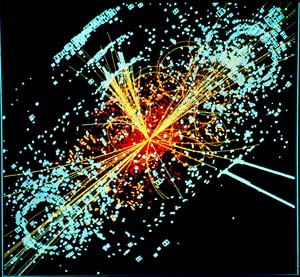|
Saturday
Science looks at unusual experiments
The progress of physics requires the
collaboration of both experimentalists and
theorists; only the rare physicist, such as Enrico
Fermi, has been successful at both lines of work.
Experimental physicists often
exercise great ingenuity to arrange instrumented
events that can either verify or falsify the clever
ideas of their theoretical friends, who return the
favor by laboring to fold the experimentalists’ most
improbable findings into their theories.
At Washington University in St. Louis
this semester, the Department of Physics and
University College, both in Arts & Sciences, will
describe a few of the experimentalists’ greatest
successes. Four lectures on great physics
experiments will be held at 10 a.m. on four
consecutive Saturday mornings, March 10–31, in the
Hughes Lecture Room, Room 201 in Crow Hall.
Presented by faculty members of the
physics department and tailored for the general
public, the lectures are free and open to the
public.
The Saturday Science lectures have
been organized since their inception 19 years ago by
Michael Friedlander, PhD, professor of physics.

Friedlander
Friedlander, an experimentalist who
studies cosmic rays and infrared and gamma-ray
astronomy, has also written about pseudoscience and
the conduct of science. He feels that scientists
have an obligation to engage the public.
“As scientists,” he says, “we have an
obligation to explain to the non-expert public what
we are doing, what is exciting about our findings
and where we think all of this may lead.
“In this way, we would hope that the
public would gain some understanding of the methods
of science, be willing to continue to support our
efforts and will also not try to impose ideological
restrictions to what we may study.
“History shows that none of this
should be taken for granted,” he says.
The schedule
March 10, “The Discovery of Cosmic
Rays and What They Are,” Martin Israel, PhD,
professor of physics
This year, 2012, is the centennial of
the discovery of cosmic rays – ionizing radiation
bombarding the Earth from space. Israel will
describe the early balloon observations by Victor
Hess, who showed that the radiation was coming from
space rather than originating on Earth.

TIGER, a
WUSTL and NASA balloon-borne experiment to
measure the elemental abundances of galactic
cosmic rays.
Twenty years later, through his
worldwide cosmic ray survey, WUSTL’s Arthur Holly
Compton was able to show that the cosmic rays were
not “rays” but rather were charged particles.
Meanwhile, in studies of cosmic-ray particles in the
laboratory, Carl Anderson found a positively charged
electron — the theoretically-predicted “positron,”
and in 1936 Hess and Anderson shared the Nobel Prize
in physics.
March 17 “The LHC and the search for
the Higgs,” Michael C. Ogilvie, PhD, professor of
physics
An essential component of experiments
that explore the internal structure of atomic nuclei
are beams of high-speed nuclei. These are
accelerated and made to collide. Debris from their
collisions is examined and provide the clues being
sought.

A
simulation of the debris that would result if a
collision at the collider in Geneva did produce
a Higgs particle.
Ogilvie will describe experiments in
progress at the Large Hadron Collider (LHC) in
Geneva, where the existence of the predicted Higgs
particle might be demonstrated.
March 24, “The Lamb Shift,” John
Rigden, PhD, adjunct professor of physics
Rigden will describe the Lamb Shift,
named for Willis Lamb who was awarded the Nobel
Prize for experiments that explored the internal
energy of the hydrogen atom.
March 31, “The Ingenious Experiments
of Baron Roland von Eötvös,” Ramanath Cowsik, PhD,
professor of physics and director of WUSTL’s
McDonnell Center for the Space Sciences
The Eötvös experiment, planned by
Baron Roland Eötvös in the early years of the 20th
century, provides deep insights into the nature of
gravity, and Einstein drew on these experimental
observations as he formulated his General Theory of
Gravitation.
For more information, contact Sarah
Hedley at (314) 935-6276 or visit physics.wustl.edu.
Click “Seminars/Events” and then “Saturday
Lectures.”
Source: Washington
University
|



